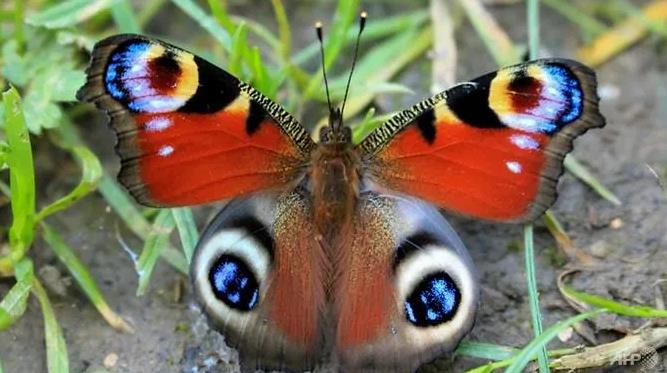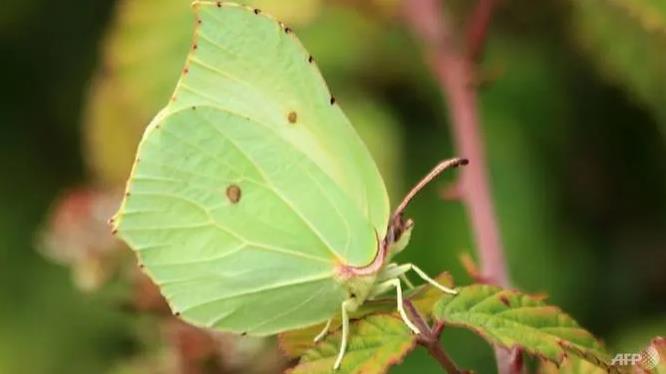
Colorful larger species, like this Peacock butterfly, struggle to moderate their temperature, but they do better than smaller butterflies. /AFP
Colorful larger species, like this Peacock butterfly, struggle to moderate their temperature, but they do better than smaller butterflies. /AFP
A butterfly's ability to absorb or reflect heat from the sun with its wings could be a matter of life and death in a warming world, according to British research published Thursday, calling for gardens, parks and farms to host shady, cooling-off spots.
While all butterflies are ectotherms, which means they cannot generate their own body heat, the ability to regulate temperature varies significantly, researchers said.
The study found that species that struggle to moderate their body temperature often rely on being able to escape the full heat of the sun in shaded "microclimates" to survive.
These butterflies are "likely to suffer the most from climate change and habitat loss," said lead author Andrew Bladon of the University of Cambridge's Department of Zoology.
Researchers said the cooler niches they rely on have dwindled, as habitat is lost and fragmented, driving population decline in two-thirds of Britain's butterfly species.
This is exacerbated by extreme weather events and temperature fluctuations made worse by climate change, they said.
To measure how different butterflies cope with temperature change, researchers captured 4,000 wild specimens from 29 species, combing across several UK sites in monthly surveys from April to September 2009 and May to September in 2018.
They recorded the behavior of each butterfly and then, if they could catch it in their nets, took its temperature using a tiny, 0.25-millimeter thick thermometer.
The study found that bigger, pale-colored butterflies, like the Large White or Brimstone species, are better at thermoregulation because they can angle their wings to reflect the sun's heat either away from them or onto their bodies to attain the right temperature.

The study found that bigger, pale-colored butterflies, like this Brimstone butterfly, are better at thermoregulation. /AFP
The study found that bigger, pale-colored butterflies, like this Brimstone butterfly, are better at thermoregulation. /AFP
Population decline
Researchers said that these species had either stable or growing populations.
But among species with smaller or more colorful wings, they found a less rosy picture, particularly among the "thermal specialists" that use shade to cool down.
These species, such as the Small Copper butterfly, have suffered steeper population declines over the last 40 years, according to the study, which was published in the Journal of Animal Ecology.
Bladon said landscapes must become more diverse to protect a range of butterfly species.
"Even within a garden lawn, patches of grass can be left to grow longer – these areas will provide cooler, shady places for many species of butterfly," he said in a university press release.
"We also need to protect features that break up the monotony of farm landscapes, like hedgerows, ditches, and patches of woodland."
Insects, including butterflies, are the world's top pollinators – 75 percent of top global food crops depend on animal pollination, according to the UN.
Source(s): AFP